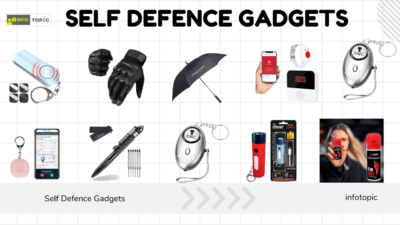Linkedin xray search techniques are ...
Introduction to LinkedIn XRay Search
In today’s competitive job market, recruiters and hiring managers are constantly seeking innovative ways to find top talent. One such powerful technique that has gained significant traction is LinkedIn XRay Search. This method allows professionals to uncover hidden gems in the vast sea of LinkedIn profiles, going beyond the platform’s native search capabilities.
LinkedIn XRay Search is a sophisticated approach that leverages external search engines, primarily Google, to perform targeted searches on LinkedIn profiles. By using this technique, recruiters can bypass LinkedIn’s internal search limitations and access a broader pool of potential candidates.
The term “X-Ray” is aptly chosen, as it allows users to metaphorically see through the LinkedIn platform, revealing profiles that might otherwise remain hidden from view.
Understanding XRay Search Techniques
At its core, X-Ray Search relies on the use of advanced search operators and Boolean logic to refine and narrow down search results. These techniques allow recruiters to create highly specific search queries that target the exact skills, experience, and qualifications they’re looking for in a candidate. Key components of linkedin xray search include:
- Boolean Operators: These logical connectors (AND, OR, NOT) help combine or exclude search terms to create more precise queries .
- Google Search Operators: Special commands like “site:”, “intitle:”, and “inurl:” that help focus the search on specific parts of web pages or websites .
- Wildcards: The use of asterisks (*) to represent unknown or variable terms, allowing for more flexible searches .
- Quotation Marks: Used to search for exact phrases, ensuring that words appear together in the order specified.
By mastering these elements, recruiters can craft powerful search strings that yield highly relevant results, significantly improving their candidate sourcing efforts.
LinkedIn XRay Search vs. Google XRay Search
While LinkedIn xray search and Google X-Ray Search share similar principles, they have distinct characteristics that set them apart. Understanding these differences is crucial for optimising your recruitment strategy.
LinkedIn XRay Search:
- Specifically targets LinkedIn profiles using external search engines
- Primarily uses Boolean operators to refine searches within LinkedIn’s domain
- Focuses on accessing public LinkedIn profiles, including those outside a user’s network
- Limited to profiles that are publicly accessible and indexed by search engines
Google X-Ray Search:
- Can be applied to any website, not just LinkedIn
- Utilizes a broader set of Google search operators for more complex queries
- Provides access to a wider array of information across various platforms
- Limited by Google’s indexing capabilities and website privacy settings
The key distinction lies in the scope and application of these techniques. While LinkedIn X-Ray Search is tailored for finding LinkedIn profiles, Google X-Ray Search offers a more versatile toolset for discovering information across the web. Recruiters often use a combination of both methods to maximise their sourcing capabilities.
Best Practices for LinkedIn XRay Search
To make the most of LinkedIn XRay Search, consider the following best practices:
1.Master Boolean Logic: Understand how to effectively use AND, OR, and NOT operators to create precise search strings .
2.Utilize Google Search Operators: Incorporate operators like “site:”, “intitle:”, and “inurl:” to refine your searches and target specific types of LinkedIn pages .
3.Craft Specific Search Strings: Combine Boolean and Google operators to create highly targeted search queries. For example:

This string targets LinkedIn profiles with digital marketing or SEO experience at a managerial level, excluding job postings .
4.Use Wildcards Strategically: Employ asterisks to capture variations in job titles or skills. For instance:

This search will find profiles with any sales-related managerial titles.
5. Regularly Update Search Strings: Keep your search queries current by updating them to reflect industry trends and evolving job requirements.
6. Analyse and refine: Monitor the effectiveness of your searches and adjust your approach based on the quality of results you receive.
By implementing these best practices, recruiters can significantly enhance their ability to find qualified candidates through LinkedIn XRay Search.
Advanced X-Ray Search Techniques
For those looking to take their X-Ray Search skills to the next level, consider these advanced techniques:
1.Targeting Specific Locations: Incorporate location keywords to find candidates in particular areas:

This search targets sales representatives in Copenhagen or Oslo.
2.Excluding Unwanted Results: Use the NOT operator to filter out irrelevant profiles:

This query finds Ruby programmers who are not in senior positions .
3.Combining Multiple Criteria: Create complex search strings that target specific combinations of skills, experience, and qualifications:

This search looks for CTOs or Chief Technology Officers with Python or Java skills and startup experience.
4.Using Parentheses for Grouping: Group search terms to create more logical and precise queries:

This search targets professionals in machine learning or AI with advanced degrees and a track record of publications or patents.
By mastering these advanced techniques, recruiters can fine-tune their searches to uncover highly qualified candidates who might otherwise be overlooked.
Tools and Resources for XRay Searching
While X-Ray Search primarily relies on search engines, several tools and resources can enhance your sourcing efforts:
- Boolean Search String Builders: Tools like Recruitin.net or Sourcing.io can help construct complex Boolean search strings.
- Chrome Extensions: Extensions like “X-Ray Search for LinkedIn” can streamline the process of performing X-Ray searches directly from your browser.
- Keyword Density Analysis Tools: Utilize tools like the Keyword Density Analysis Tool by Internet Marketing Ninjas to optimize your search strings for better results .
- SEO Plugins: For those creating content about X-Ray Search, SEO plugins like Yoast SEO can help optimize your articles for search engines.
- LinkedIn Sales Navigator: While not an X-Ray tool per se, Sales Navigator can complement your X-Ray searches by providing additional filtering options within LinkedIn.
By leveraging these tools alongside your X-Ray Search techniques, you can create a powerful, multi-faceted approach to candidate sourcing.
Optimizing Your X-Ray Search Strategy
To maximize the effectiveness of your X-Ray Search efforts, consider the following optimization strategies:
- Keyword Research: Conduct thorough keyword research to identify the most relevant terms and phrases for your target candidates. Use tools like Google Keyword Planner or SEMrush to discover high-value keywords in your industry.
- Iterative Refinement: Start with broad searches and gradually refine them based on the quality of results. This iterative process helps you identify the most effective search strings for your specific needs.
- Combine with Other Sourcing Methods: Use X-Ray Search in conjunction with other recruiting tools and methods, such as LinkedIn’s native features, job boards, and professional networking events.
- Create a Search String Library: Develop and maintain a library of effective search strings for different roles and industries. This resource can save time and improve consistency across your recruiting team.
- Stay Updated on Industry Trends: Keep abreast of changes in your target industries to ensure your search strings remain relevant and effective.
- Monitor Search Engine Algorithm Updates: Stay informed about changes to search engine algorithms that might affect your X-Ray Search results and adjust your strategies accordingly.
By continuously refining and optimizing your X-Ray Search strategy, you can stay ahead of the curve in talent acquisition and consistently find high-quality candidates.
Ethical Considerations and Privacy
While X-Ray Search is a powerful tool for recruiters, it’s essential to use it ethically and responsibly. Consider the following guidelines:
- Respect Privacy Settings: Only access publicly available information and respect the privacy settings of LinkedIn users.
- Comply with Legal Requirements: Ensure that your sourcing practices comply with data protection regulations such as GDPR or CCPA.
- Be Transparent: When contacting candidates found through X-Ray Search, be upfront about how you discovered their profile.
- Use Information Appropriately: Only use the information obtained through X-Ray Search for legitimate recruiting purposes.
- Maintain Data Security: Implement proper data handling and storage practices to protect candidate information.
By adhering to these ethical guidelines, recruiters can maintain professional integrity while leveraging the power of X-Ray Search.
Conclusion
LinkedIn XRay Search is a game-changing technique for recruiters and hiring managers seeking to expand their talent pool and find the best candidates for their organizations. By mastering the art of crafting precise search strings, understanding the nuances between linkedin xray search and Google X-Ray Search, and leveraging advanced techniques and tools, professionals can significantly enhance their sourcing capabilities.
As the job market continues to evolve, those who can effectively utilize X-Ray Search will have a distinct advantage in identifying and engaging top talent. However, it’s crucial to remember that this powerful tool should be used responsibly, with a strong emphasis on ethical considerations and respect for privacy.
By incorporating X-Ray Search into your recruitment strategy and continuously refining your approach, you can unlock a world of hidden talent and drive your organization’s success through strategic hiring. Embrace the power of X-Ray Search and revolutionize your recruitment process today!













